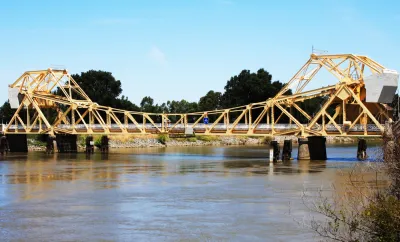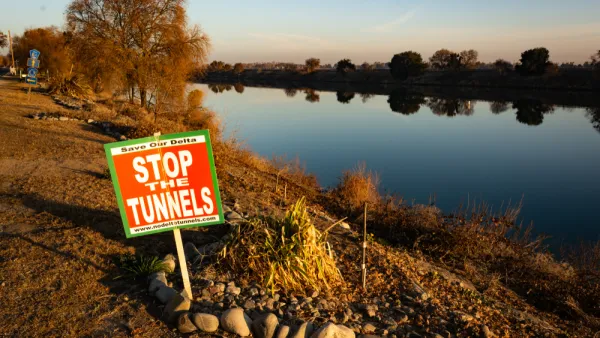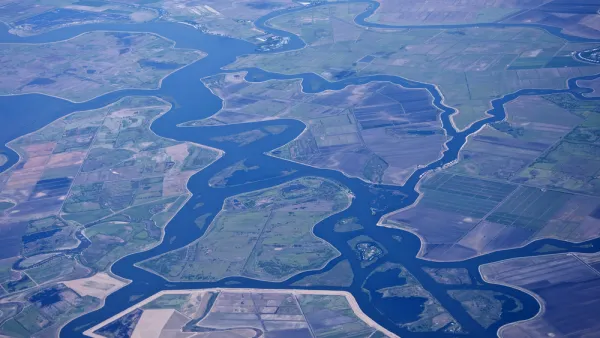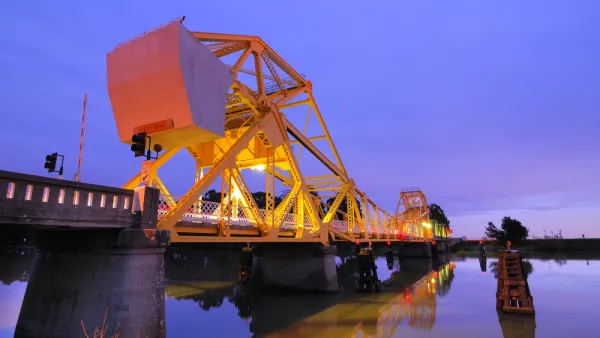The U.S. Fish & Wildlife Service and the National Marine Fisheries Service gave a crucial green light for the intensely controversial and ambitious California WaterFix project, which would pump water around the Sacramento-San Joaquin Delta.

"The Delta tunnels got a crucial green light Monday from two federal agencies, whose scientists said they’ve determined that the controversial project can co-exist with the endangered fish that inhabit the waters of the Sacramento-San Joaquin Delta," report Dale Kasler and Ryan Sabalow.
More specifically, "the U.S. Fish & Wildlife Service and the National Marine Fisheries Service said the $15.5 billion tunnels aren’t likely to jeopardize the continued existence of the Delta smelt, Chinook salmon, steelhead and other threatened species," according to Kasler and Sabalow. The biological opinions, as the reports are called, reversed course somewhat in the months between draft form and final form. An op-ed by Matt Weiser, published in May, used the draft biological opinions to build an argument making just the opposite point: that the project will make life worse for fish.
2017 has long been circled on the calendar as a critical year for the so-called WaterFix project, which in previous iterations this decade has been called the peripheral canal project or the Bay Delta Conservation Plan. A peripheral canal proposal was also defeated by voters in 1982 [pdf].
The article quotes Jeff Kightlinger, general manager of the Metropolitan Water District, who says the release of the biological opinions is a "huge milestone" for the project. Ryan Sabalow reported in December that the state signed off on the project in December, and that construction could begin in 2018.
FULL STORY: ‘Huge milestone’ for Delta tunnels – feds say they won’t push fish over the brink

National Parks Layoffs Will Cause Communities to Lose Billions
Thousands of essential park workers were laid off this week, just before the busy spring break season.

Retro-silient?: America’s First “Eco-burb,” The Woodlands Turns 50
A master-planned community north of Houston offers lessons on green infrastructure and resilient design, but falls short of its founder’s lofty affordability and walkability goals.

Delivering for America Plan Will Downgrade Mail Service in at Least 49.5 Percent of Zip Codes
Republican and Democrat lawmakers criticize the plan for its disproportionate negative impact on rural communities.

Test News Post 1
This is a summary

Test News Headline 46
Test for the image on the front page.

Balancing Bombs and Butterflies: How the National Guard Protects a Rare Species
The National Guard at Fort Indiantown Gap uses GIS technology and land management strategies to balance military training with conservation efforts, ensuring the survival of the rare eastern regal fritillary butterfly.
Urban Design for Planners 1: Software Tools
This six-course series explores essential urban design concepts using open source software and equips planners with the tools they need to participate fully in the urban design process.
Planning for Universal Design
Learn the tools for implementing Universal Design in planning regulations.
EMC Planning Group, Inc.
Planetizen
Planetizen
Mpact (formerly Rail~Volution)
Great Falls Development Authority, Inc.
HUDs Office of Policy Development and Research
NYU Wagner Graduate School of Public Service





























